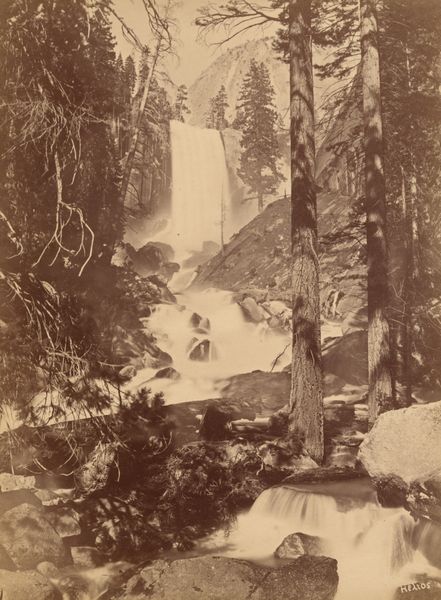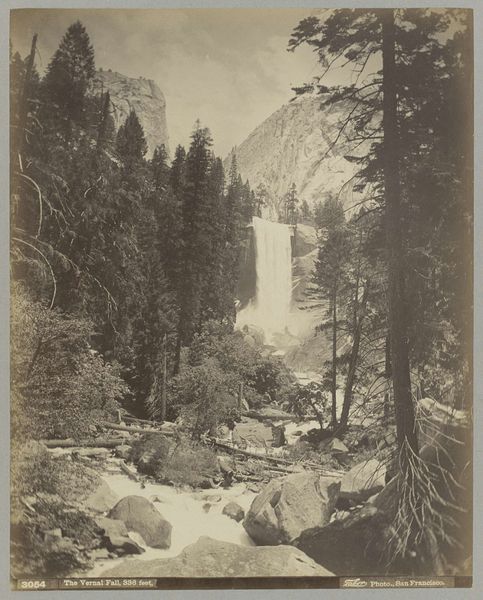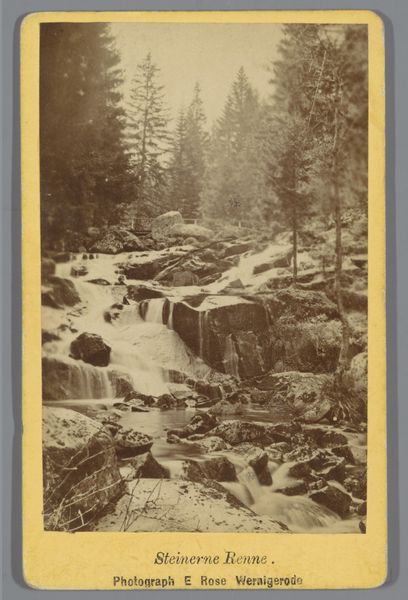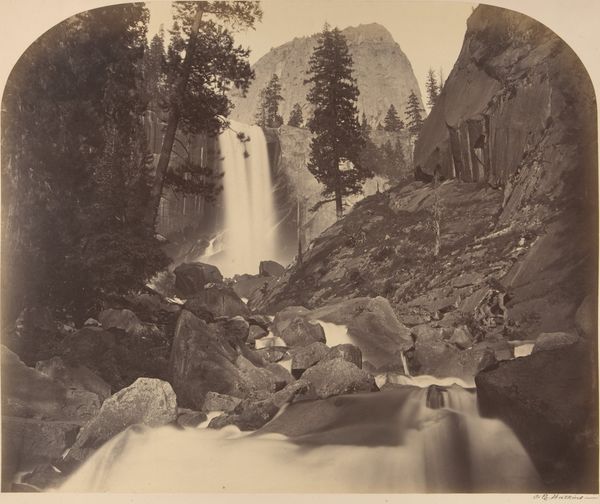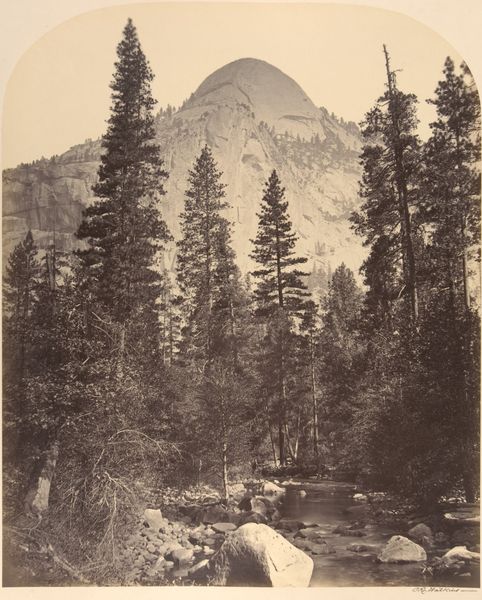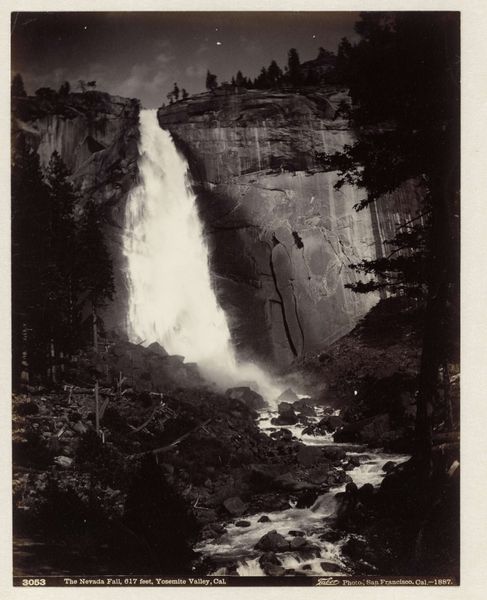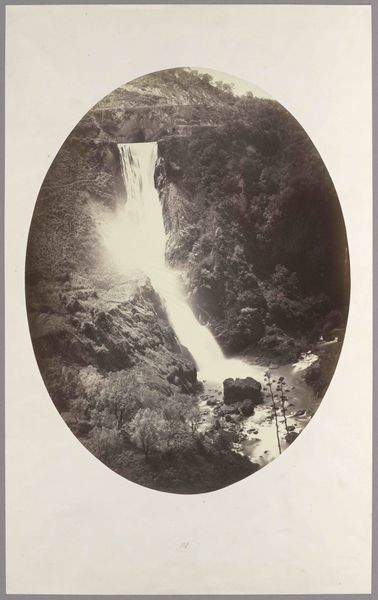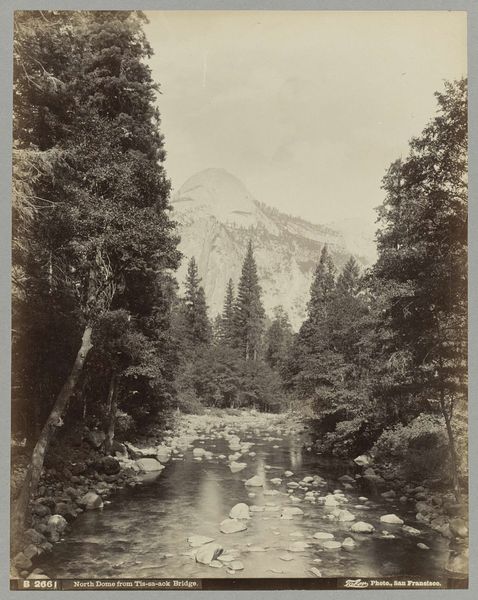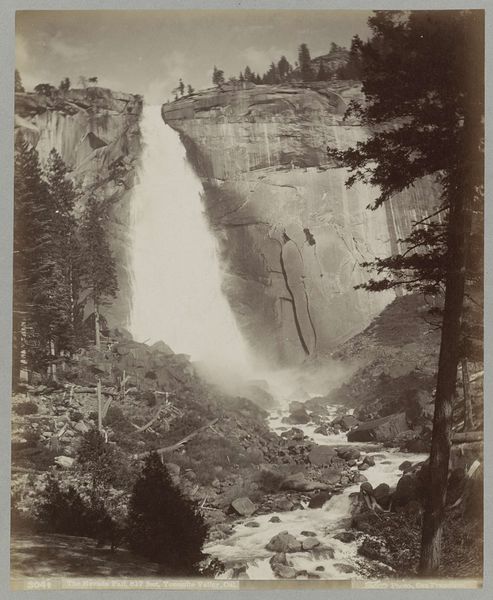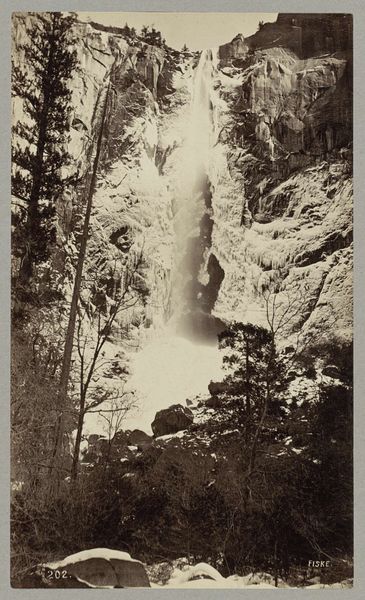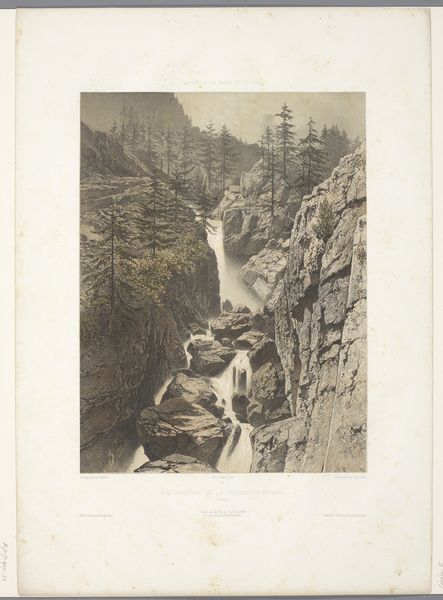
plein-air, photography, albumen-print
#
plein-air
#
landscape
#
photography
#
mountain
#
hudson-river-school
#
water
#
albumen-print
Copyright: Public Domain
Curator: What strikes me immediately is the luminescence achieved in this early albumen print. It’s a seemingly straightforward depiction, but the silvery tones give it a dreamy quality. Editor: Indeed, Watkins’s “Vernal Fall, Yosemite,” taken around 1865-1866, exemplifies the Hudson River School’s sensibility toward the American landscape, doesn't it? Yet, understanding Watkins requires appreciating photography’s specific conditions as an industry and its relationship to tourism in this era. Curator: Absolutely, we can discuss the romanticism of untamed nature but first, look at how he leads our eye. The blurred water in the foreground is cleverly balanced by the stark mountain face in the background, framing the main subject: the falls themselves. It is not so different to the compositional arrangements favored by painters. Editor: I think this arrangement has more to do with Watkins's target customer; tourism in Yosemite was booming, especially after the Civil War, turning landscapes into commodities. His technical skill made his views superior and more marketable. His mammoth-plate photographs helped fuel environmental preservation efforts, yet these efforts themselves were also embedded in capitalist consumption. Curator: Are you suggesting his artistry was merely incidental to profit? The image still evokes a sense of awe. The dark, textured rocks contrast beautifully with the smooth, milky waterfall. Editor: Not incidental, but integrated. Watkins navigated constraints; consider the logistics, the mobile darkroom, and heavy equipment transported across difficult terrain. He captured images intended for consumption. However, it also matters to me who did this work, that is to say Watkins hired many indigenous people for assistance to the final outcome of this beautiful landscape. Curator: You remind us that the “untouched” wilderness had already been shaped and inhabited by native peoples, even at the time Watkins' lens found it. Editor: Exactly. That labor needs acknowledgement as part and parcel of how we should understand such beautiful vistas. Curator: So, from light and shadow play to socioeconomic context, it certainly gives you much to reflect on. Editor: It’s a dialogue between vision and viability, if you ask me!
Comments
No comments
Be the first to comment and join the conversation on the ultimate creative platform.
